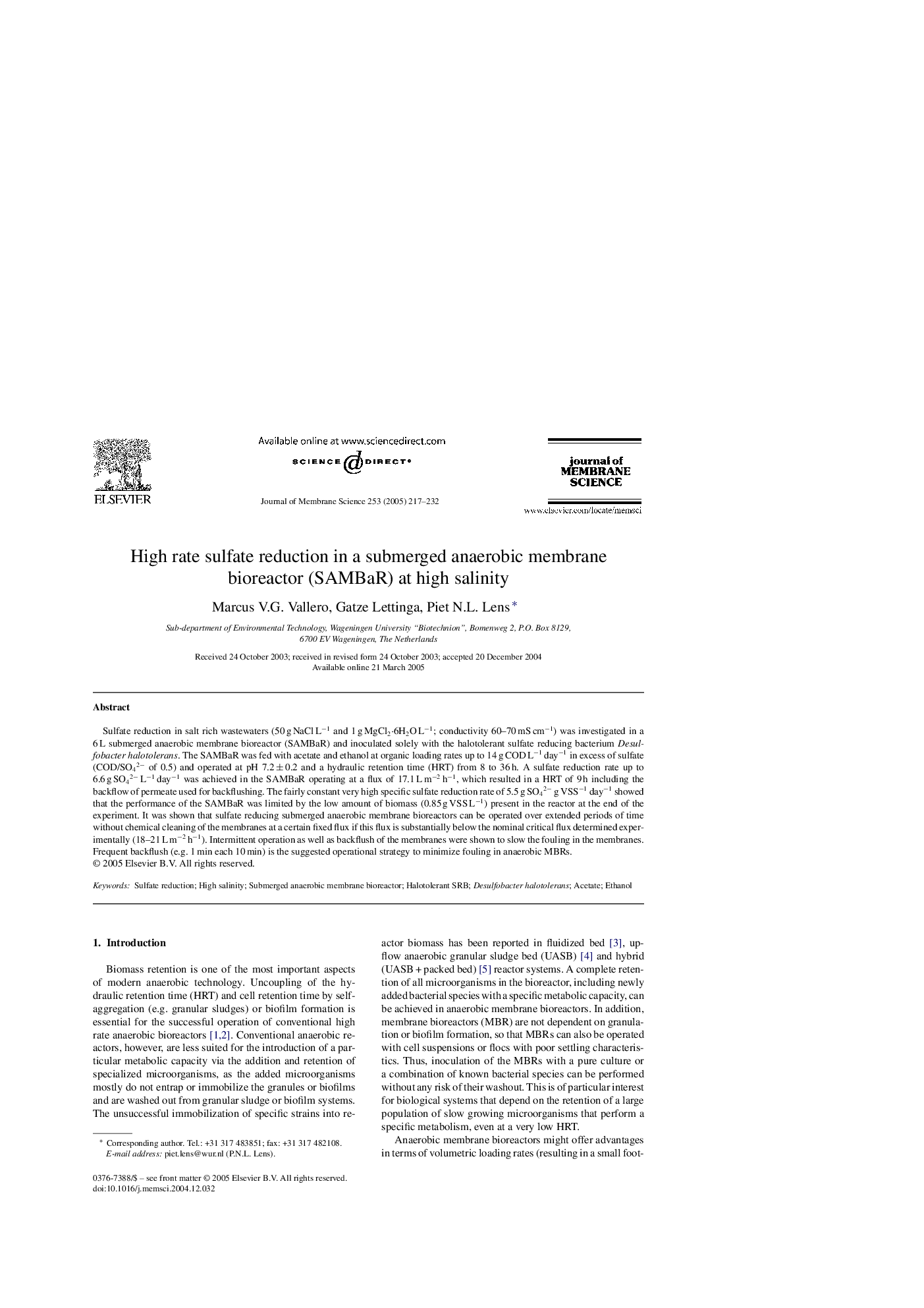| Article ID | Journal | Published Year | Pages | File Type |
|---|---|---|---|---|
| 9684919 | Journal of Membrane Science | 2005 | 16 Pages |
Abstract
Sulfate reduction in salt rich wastewaters (50 g NaCl Lâ1 and 1 g MgCl2·6H2O Lâ1; conductivity 60-70 mS cmâ1) was investigated in a 6 L submerged anaerobic membrane bioreactor (SAMBaR) and inoculated solely with the halotolerant sulfate reducing bacterium Desulfobacter halotolerans. The SAMBaR was fed with acetate and ethanol at organic loading rates up to 14 g COD Lâ1 dayâ1 in excess of sulfate (COD/SO42â of 0.5) and operated at pH 7.2 ± 0.2 and a hydraulic retention time (HRT) from 8 to 36 h. A sulfate reduction rate up to 6.6 g SO42â Lâ1 dayâ1 was achieved in the SAMBaR operating at a flux of 17.1 L mâ2 hâ1, which resulted in a HRT of 9 h including the backflow of permeate used for backflushing. The fairly constant very high specific sulfate reduction rate of 5.5 g SO42â g VSSâ1 dayâ1 showed that the performance of the SAMBaR was limited by the low amount of biomass (0.85 g VSS Lâ1) present in the reactor at the end of the experiment. It was shown that sulfate reducing submerged anaerobic membrane bioreactors can be operated over extended periods of time without chemical cleaning of the membranes at a certain fixed flux if this flux is substantially below the nominal critical flux determined experimentally (18-21 L mâ2 hâ1). Intermittent operation as well as backflush of the membranes were shown to slow the fouling in the membranes. Frequent backflush (e.g. 1 min each 10 min) is the suggested operational strategy to minimize fouling in anaerobic MBRs.
Related Topics
Physical Sciences and Engineering
Chemical Engineering
Filtration and Separation
Authors
Marcus V.G. Vallero, Gatze Lettinga, Piet N.L. Lens,
